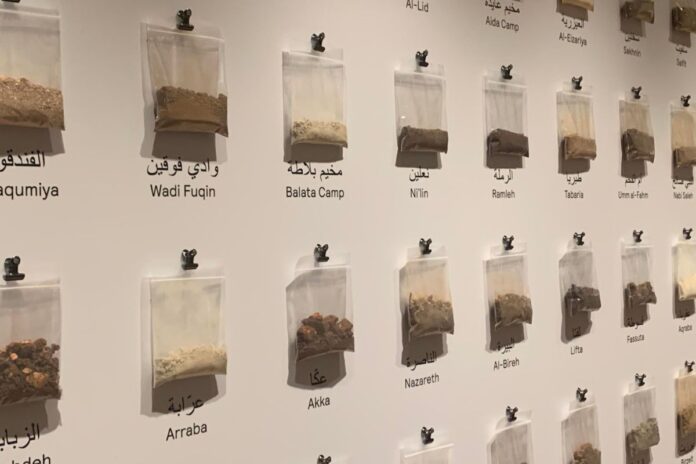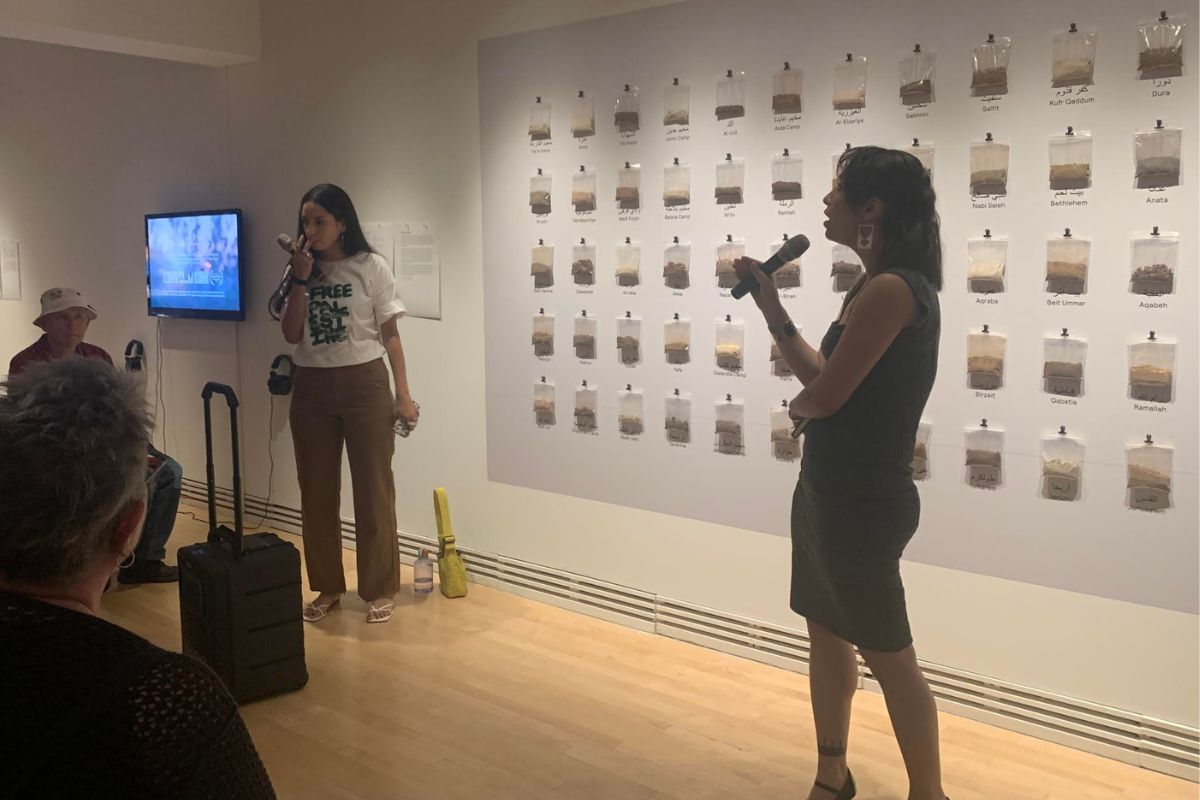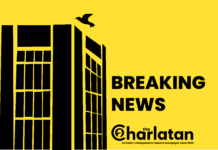
The Carleton University Art Gallery (CUAG) held a launch party to celebrate its latest exhibition, A Dream of Return, on Sept. 29. It is one of three new multimedia exhibits in the CUAG’s fall collection and aims to highlight creative resistance through art.
The multimedia exhibit focuses on various interpretations of the word “return.” The exhibit frames “return” as not simply a glance back in time, but as a way of looking to the future and dreaming through creative resistance.
A Dream of Return is curated by Pansee Atta and showcases contemporary art pieces of five artists who each grapple with themes of displacement, colonialism, homelands and identity.
The first showcased piece was “The Return,” a mixed-media paper piece created in 2007 by Iraqi-Canadian artist Farouk Kaspaules.
“The Return” showcases an area in southern Iraq which has been continuously invaded throughout history and how these invasions have shaped the land. Kaspaules said he hopes his piece will encourage people to learn about southern Iraq’s history and inspire curiosity about the land.
Another piece on display is an untitled acrylic and oil painting by culturally Jewish artist Nic Cooper, which they created in the aftermath of the Oct. 7, 2023 attacks and conflict in Gaza.
“Feeling utter despair… I was just like, ‘I can’t take anything else in, it needs to come out,’” said Cooper, adding that they used the piece as a means of personal and political expression.
Toronto artist Adeyemi Adegbesan drew in attendees with his unique, woven Afrofuturist cotton pieces.
Adegbesan said he was drawn to the Afrofuturist movement as a way to create art about the past, present and future of his culture through a positive, imaginative lens.
“My whole life has been an accumulation of cultural knowledge,” Adegbesan said.

He said he was inspired by the culturally rich practice of braiding to create his pieces that hung from the walls, adding that he was drawn to the idea of blankets as “portable homes” for people who are unable to return to a specific place or time period.
Indigenous queer filmmaker Theo James Cuthand used the experimental video medium to showcase his Cree and Scottish culture and the history of colonization.
His visually striking pieces “Medicine Bundle,” “Medicine and Magic” and “Homelands” played continuously, inviting viewers to listen and reflect.
Palestinian artist Rana Nazzal Hamadeh also created multiple contemporary multimedia pieces about hardships and displacement.

Her ongoing collection of soil, titled “1/1000th of a Dunam,” showcases various bags of earth from different regions of Palestine.
“My dad would ask us when we go to bring him soil and he just kept it in a plastic bag,” said Hamadeh, whose father was displaced from his home by the Israeli state in 1948 and hasn’t been allowed to return since.
As an artist, Hamadeh said she hopes to find new ways of encouraging people to engage with the stories of Palestinian people and make their voices heard.
“This sense of belonging without being home has really caught my attention,” said CUAG employee Rachel Fleming, who felt drawn in by the different interpretations.
Fleming said her favorite pieces included Adegbesan’s woven blankets and “1/1000th of a Dunam” which she called “astonishing” and “painful.”
A Dream of Return is on display at the CUAG until Dec. 14. Admission is free.
Featured image by Emily Kapralik/The Charlatan.





